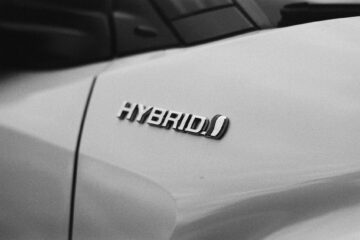What’s New for Drivers?
Modern travel is undergoing a profound transformation. Today’s vehicles are equipped with advanced features, such as adaptive cruise control and lane-keeping assist, which reduce stress and make every drive smoother. Dynamic safety systems and driver-friendly automation are blending comfort, power, and confidence into daily commuting. As smart automotive technologies continually evolve, drivers now have innovative tools that help prevent accidents and enhance road safety. Learn more about the latest vehicle models, innovations, and resources that are giving drivers greater autonomy and assurance than ever before.
Forward-thinking car manufacturers are pushing the boundaries of what’s possible, from built-in connectivity and infotainment options to advanced navigation and security features. These upgrades help drivers stay connected to both their vehicles and the world around them, fundamentally changing how we experience the road every day.
The Shift in Mobility Trends
The landscape of mobility is quickly moving away from traditional car ownership. Instead of viewing a personal vehicle as a status symbol, more people are opting for pay-per-use and shared mobility options. Car-sharing, ride-hailing, and flexible leasing give daily commuters the kind of convenience and flexibility once thought impossible. This shift not only makes transportation more accessible but also encourages smarter urban planning, helping to reduce city congestion.
According to Forbes, this change in mindset is impacting everything from traffic patterns to air quality. The emergence of micro-mobility options, such as e-scooters and electric bikes, further supports a more agile and eco-friendly future for urban travel.
Technological Innovations in Safety
Vehicle safety has entered a new era. Features once considered high-tech luxuries—such as automatic emergency braking, blind-spot detection, and collision avoidance—are now commonplace and often expected. Studies from the Insurance Institute for Highway Safety show that these advanced driver-assistance systems (ADAS) can significantly reduce the risk of accidents. Whether it’s monitoring traffic with 360-degree cameras or alerting drivers to oncoming hazards, today’s safety technology is making both drivers and pedestrians much safer on the road.
Another major advancement is the integration of real-time communication systems. Vehicle-to-vehicle (V2V) and vehicle-to-infrastructure (V2I) technologies are connecting cars with smart traffic systems, ensuring faster emergency responses, optimized routes, and improved traffic flow.
Eco-Friendly Driving Goes Mainstream
Concerns about climate change and urban pollution have brought eco-friendly driving to the forefront of public attention. Hybrid and electric vehicles, once limited to a small segment of the car market, have become widely accessible. With public charging stations expanding nationwide and attractive government incentives, more families than ever are choosing electric or hybrid models for their next vehicle. Automakers are responding with robust commitments to electrify their fleets, promising a more sustainable future for both drivers and the world. According to The New York Times, adoption rates for EVs have surged in recent years, signaling that eco-conscious driving is now mainstream, not just a niche trend.
Changing Perspectives on Car Ownership
Ownership models are adapting to digital lifestyles and the desire for flexibility. Research indicates that Millennials and Gen Z are more likely than previous generations to lease, subscribe to, or even skip outright car ownership altogether. Subscription services and robust public transit systems provide viable alternatives for those living in cities or those who prioritize experiences and financial flexibility over possessions. This new approach aligns with modern values—mobility when needed, community when possible, and minimal environmental impact.
How Digital Services Enhance the Driver Experience
Digital technology touches nearly every aspect of today’s driving experience. Connected vehicles allow drivers to access live traffic reports, personalized music selections, and seamless navigation. Voice assistants, integrated apps, and smart infotainment systems empower drivers to multitask safely. Features like real-time weather updates and emergency assistance provide peace of mind. As vehicles become smarter, the lines between comfort, convenience, and safety are blending, making time on the road more productive and enjoyable.
Moreover, digital services help drivers optimize fuel usage, schedule maintenance, and troubleshoot small issues without needing a trip to the service center. Such advancements make driving easier, cost-effective, and less stressful—especially for those with busy lifestyles.
Where Everyday Driving Is Headed Next
The horizon for everyday driving is filled with exciting possibilities. With continued progress in autonomous driving, vehicle-to-grid technology, and digital ecosystems, the next decade promises greater efficiency, sustainability, and connectedness. From remote vehicle monitoring to on-demand mobility as a service, the way we think about transportation is set for dramatic shifts. What seemed futuristic a few years ago is quickly becoming reality as consumer expectations drive rapid change in the automotive industry.
Expect routine activities—such as charging, repairs, and even upgrades—to be managed via smartphone apps, making car care more accessible and intuitive. Autonomous vehicles are also expected to enhance mobility for people with disabilities and the elderly, further expanding the reach of smart transportation solutions.
Final Thoughts: Driving Into a New Era
Modern driving is evolving from a necessity into an experience defined by technology, sustainability, and personal choice. With new features and mobility models, drivers now have more options to fit their needs and values than ever before. From families investing in safer, smarter vehicles to individuals embracing green alternatives, today’s roads cater to a diverse set of lifestyles and priorities. As the automotive industry advances, the promise of safer, greener, and more convenient journeys is becoming a reality—ushering in a truly new era for everyday driving.















